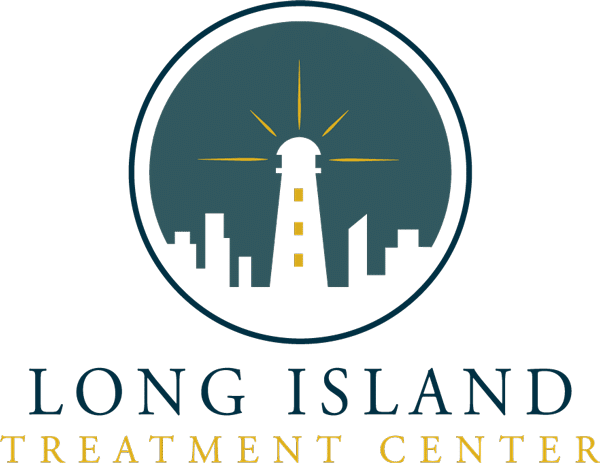Long Island has been considered ground zero for the opiate and heroin epidemics for some time. According to a National Safety Council report, Long Island residents were more than one-fifth of overdoses in the state in 2017.
Of course, untangling the root of the problem is easier said than done. For example, drug trends point to the island’s population and low average age as significant drivers for illicit drug businesses. Furthermore, dealers have started selling more potent substances, propelling addiction even in recreational users.
Table of Contents
Commonly Abused Drugs in Long Island
Long Island residents living with substance use may struggle with various content; people can misuse alcohol, heroin, opioids, and other drugs, including legally-prescribed ones.
Alcohol is typically the most accessible drug since it’s widely accepted in most cultures. However, it’s detrimental when misused; on average, about 30 Americans die every day from driving while intoxicated, and six more die from alcohol poisoning.
Long Island communities have taken notice of drug use in their backyard; alcohol and drug use was a top health concern, according to a 2018 survey. This same study also reports that 17.4% of Long Island residents admitted to binge drinking in the past month; this percentage was the lowest reported in six years.
Drugs of the Epidemic
The drug epidemic casts a long shadow throughout the country, especially in Long Island. Locally, the most abused drugs include:
- Oxycodone
- Prescription opioids
- Fentanyl
- Methamphetamine
- Cocaine
- Heroin
- Benzodiazepines, such as Xanax and Valium
What’s Driving Overdose Deaths?
So why are Long Island residents experiencing so many drug overdose deaths? The following are a few primary factors:
- Rise of fentanyl: Experts say fentanyl is responsible for many fatal drug overdoses; it’s an opioid 100 times more powerful than morphine. This dangerous potency strongly influences fentanyl addiction, making it easier to overdose on this drug. Not everyone may realize they’re taking fentanyl; street dealers often mix it into other substances without informing their associates.
- Loss of services: The pandemic shuttered several services meant to help those living with opioid addiction, making it challenging for people to seek care when needed. Overcrowded hospitals struggled to pick up the slack during a national health crisis.
- Increasing mental health problems: There is a clear connection between mental health, addiction, and the opioid epidemic. After all, many people who use drugs started to self-medicate and relieve symptoms from mental disorders. The World Health Organization reported a 25% global increase in these concerns since the pandemic.
- Isolation: Finally, the pandemic also isolated many at-risk individuals. Those with addictions often struggled alone, having nobody to call when overdose symptoms manifested.
Long Island Drug Statistics
- In 2015, synthetic opioid deaths increased 73% from the previous year.
- Every day, more than 1,000 people seek treatment in emergency rooms after misusing opioids.
- Private health care costs Suffolk Country $117 million
- Private health care cost Nassau County $55 million
History of Drug Rehab in New York State
Drug rehab programs in New York State help people get clean, but the state has struggled with a drug-related crime for decades.
For over a century, federal officials have legislated against drug use, but the ’70s were especially active in the prohibition. President Nixon coined the term “The War on Drugs” a year after Congress passed the Comprehensive Drug Abuse Prevention and Control Act. Since then, local and state governments have mandated stiff penalties for possessing drugs, resulting in millions of arrests but no impact on addiction.
In the 1960s, public rehab programs were established in New York to tackle the increasing addiction problem. Legislators tried creating several expensive but largely ineffective programs, including the Methadone Maintenance program and the Narcotic Addiction and Control Commission. By the early 1970s, New Yorkers demanded stronger laws responding to violent drug crime.
Finally, New York created laws mandating 15-year minimum sentences in the so-called “Rockefeller Laws.” Again, the policy led to far more arrests but no decrease in crime. Other states followed suit despite these results. Since then, these harsh penalties have become the norm,
In 2004, the state drastically changed the Rockefeller Laws, reducing the 15-year minimum to eight and allowing nonviolent offenders to plea for fewer. Judges now have more discretion to sentence people to rehab instead of prison, dramatically dropping arrests and drug crimes. Unfortunately, other states have been slow to adopt these reforms.
Addiction Treatment Statistics
Rehab centers have helped thousands of Long Islanders recover from alcohol and drug use disorders. It’s challenging trying to fight addiction on your own; it can also be risky without medical support supervising.
Statistics on drug rehab success are high despite the ongoing opioid crisis throughout the country. Rehab centers use evidence-based treatments that can be adjusted on a client-by-client basis to help them recover from addiction safely.
- An estimated 76 percent of alcohol rehab clients remained sober after three months, 69 percent after six months, and 70 percent after nine months
- About 90 percent of people who complete drug rehab report continued abstinence nine months later
Local Resources for Help in Long Island
Long Island residents who struggle with addiction may have difficulty understanding the resources available to them.
An effective drug rehab features critical characteristics:
- Customized treatment plan: Long Island Treatment Center tailors its plans for the individual, taking into account his or her specific addiction and personal needs
- Evidence-based treatment: Long Island Treatment Center only uses tested treatment methods that are proven effective in battling drug and alcohol addiction
- Alumni support: Long Island Treatment Center includes an aftercare plan to help its clients continue their journeys once they’ve been discharged from the program
- 24-hour care: Long Island Treatment Center has round-the-clock medical and mental health support to manage any need
Rehab Centers in Long Island, New York
No two addictions or people are identical; the same is valid for drug and alcohol rehab centers. Still, many accredited facilities have similar treatment services based on evidence proven to help recovering people. The following programs are the kind you can expect at a place known for its adequate support, Long Island Treatment Center.
Alcohol and Drug Detox Programs
Detox is the first and most crucial step of any treatment plan; addiction is based on chemical dependency, and breaking physical reliance takes away substantial power.
Long Island Treatment Center offers 24-hour medical support to assist clients dealing with withdrawal and passing through the stages of detoxification. It’s rare for a recovering person not to need detox and supervision before entering a residential facility to start a program.
Inpatient Rehab Programs
Inpatient or residential treatment involves onsite housing, ensuring the individual has 24-hour access to staff for medical and behavioral support.
Typically, an inpatient regimen involves several treatment programs, including outdoor activities, counseling, fitness programs, therapy, and more. All treatment methods help people heal their minds and bodies for sustainable recovery.
Long Island Outpatient Treatment
Outpatient programs vary in intensity, depending on the recovering person’s needs and where they are in their journey. In all cases, outpatient treatment allows more individual freedom, including the liberty to go to work and return home nightly.
Sober Living Facilities in Long Island
Transitional living facilities allow recovering individuals to live together for some time after treatment. These sober living homes are meant for those with no other supportive accommodations and would otherwise be at greater risk for relapse.
Sober living homes allow inpatient and outpatient graduates to transition into normal daily life.
Aftercare Options
Recovering from drug and alcohol addiction can be a long road; after all, it doesn’t end after inpatient or outpatient treatment. Continuing care, or aftercare, is how recovering people sustain their sobriety after leaving Long Island Treatment Center.
Examples of aftercare may include:
- Relapse prevention programs
- Continued group therapy
- Continued individual therapy
- 12-step programs
- Addiction support group networks
- Rehab alumni programs
Finding Help in Long Island
Long Island and the state of New York are taking steps to address its drug crisis and increasing overdose rates. For example, there is a campaign to warn the public about fentanyl’s destructive properties, making testing supplies available throughout the region.
These measures are one step toward reducing deaths, but addiction treatment can do more. An evidence-based program designed for the individual can help those struggling with substance use develop new strategies to stop using drugs. Contact Long Island Treatment Center to learn more.


